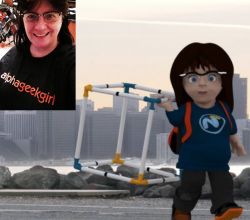Numeric Entry Field Tips
One of the handiest things you can use in your everyday workflow is the versatile way you can approach entering numbers into MODO.
Here in this video, James Darknell explains a variety of ways that even many MODO experts are unaware of.
http://community.thefoundry.co.uk/tv/training/view.aspx?id=659
I particularly like the Gang Edit. 🙂
In addition to being able to edit the number fields by typing in numbers, users can gang edit all three fields simultaneously by LMB+Clicking the icon to the left of the mini-slider enabling the feature.

INDEPENDENT - The default is i 'Independent', controls are edited independently.
COPY - The first click changes the field = 'Copy', will make whatever you type into the first field, the same in the other two fields.
PROPORTIONAL - The second click changes to ∞ (infinity) 'Proportional' where value changes are applied proportionally to all like controls.
RELATIVE - The third click changes to + 'Relative', the value change is added to all like controls. For instance if you divided the first field by /2 the other two fields would recalculate dividing by two as well.
When entering numeric values, you can use keyboard equivalents as well, such as;
'Ctrl'+'Alt'+'Enter'for Copy
'Ctrl'+'Enter' for Proportional
'Alt'+'Enter' for Relative
Related Images:












 50%
50%


 [dcs_emptyspace h="10"]Create a new material and set it to a vibrant colour.
[dcs_emptyspace h="10"]Create a new material and set it to a vibrant colour.